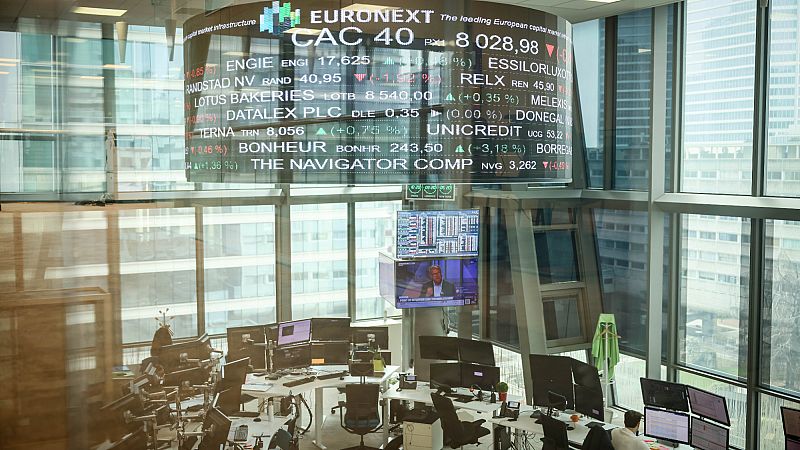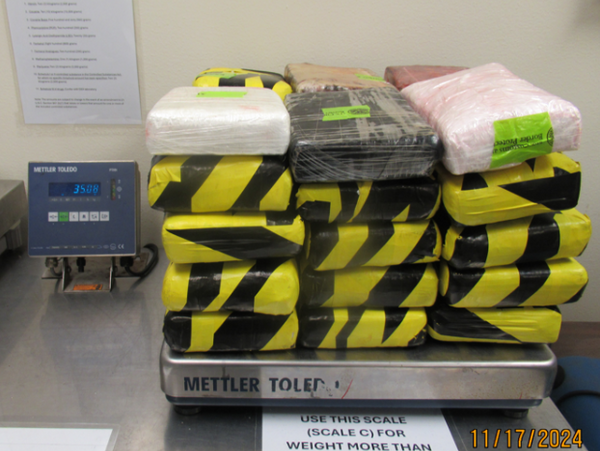
The sharp strengthening of the euro seen so far in 2025 could begin to weigh on European corporate profits, with the impact likely to surface as the second-quarter earnings season gets underway.
According to a recent analysis by Bank of America, a firmer euro — alongside softening sales — may depress earnings for the STOXX 600 index, potentially marking the weakest performance in five quarters.
The euro-dollar exchange rate has risen by 9% over the last quarter, reaching a four-year high and marking the strongest quarterly performance since late 2022.
Meanwhile, the value of the euro against a basket of foreign currencies, tracked by the ECB, rose by 4.6% in the last quarter, reaching its highest level on record on 1 July.
As the second-quarter earnings season begins in Europe, the analyst consensus from Wall Street points to a 3% decline in earnings per share (EPS) compared to the same period last year.
That drop, underpinned by a 3% contraction in sales, reflects both faltering demand and adverse foreign exchange dynamics.
Energy and consumer discretionary sectors (industries that sell non-essential goods) are expected to be the biggest drags on index earnings, more than offsetting continued resilience from healthcare.
After two quarters of positive growth, earnings from cyclical sectors excluding financials are projected to return to contraction, with EPS forecasts cut by 2.5% in the past month alone.
“Q2 earnings growth for cyclicals (ex-financials) is expected to turn negative again after two quarters of positive growth,” said Andreas Bruckner, equity strategist at Bank of America.
“Positive euro area macro surprises imply solid EPS beats, but euro strength is a risk,” he added.
While financials had supported earnings in prior quarters, their contribution is expected to be muted this time. Eurozone macroeconomic surprises were slightly positive in the second quarter, typically a sign of decent earnings performance to come.
Analysts have already slashed European earnings forecasts for 2025, citing currency appreciation and increasing trade barriers as key risks.
Since early April, consensus EPS growth expectations for both 2025 and 2026 have been cut by around 5%, with 17 of 20 major sectors seeing downgrades — autos being the hardest hit.
Expectations for 2025 EPS growth have halved, from 6% to 3%, and the 12-month forward EPS for the STOXX 600 now sits 3% below its all-time high recorded in March.
Bank of America forecasts a 4% year-on-year decline in 2025 EPS, as global trade headwinds, tariff effects and slowing investment in the US weigh on European exporters and multinationals.
Three key earnings reports to watch
Nearly two thirds of European corporates are due to report earnings by the end of July.
Among them, three bellwether companies are likely to dictate much of the market’s tone for the quarter:
-
ASML Holding N.V. will report on 16 July. Europe’s largest semiconductor firm, with a market capitalisation of around €264 billion, is expected to post a 32% rise in EPS to €5.30, with revenues forecast at €7.61 billion, up 23% year-on-year. Investors will scrutinise results for evidence that AI-related demand continues to shield the company from broader geopolitical and trade pressures. Despite the AI tailwind, ASML shares have remained flat in 2025.
-
SAP SE, Europe’s largest listed company with a €308 billion market cap, reports on 22 July. Analysts forecast EPS of €1.46, up from €1.10 a year ago, with revenues expected to climb to €9.15 billion from €8.29 billion. Shares in the software giant are up around 11.5% so far this year, buoyed by investor optimism around digital transformation and cloud adoption.
-
UniCredit SpA will be the first major eurozone bank to report second-quarter results, also on 22 July. Markets will be focused on how banks are navigating the ECB’s rate-cutting cycle. With the central bank having lowered the deposit facility rate to 2% in June, analysts expect UniCredit’s EPS to dip by 3.5% year-over-year to €1.55, with revenue down 3% to €6.16 billion. Shares of UniCredit have surged 56% year-to-date, matching their entire 2024 gain in just over six months.







